02.02.18
Background information
Last year our organization shared our plans to establish more 2000m2 in Kenya to serve as training centers for farmers. These will be in addition to Maina’s family field which we have been reporting on. In October 2017, we selected and briefed farmer on the concept. They were happy to be part of global field and share their success and challenges to other farmers across the world. We will have a total number of 4 new fields in Kenya at the first half of 2018 and grow the number before the end of the year.
Profile of new fields
The following are names of the farmers:
- Mary Wangari
- Peter Njogu
- James Waweru
- Curtis Kamau
Mary’s 2000 m2 field
This land is at Kanyawa proximal to Kariandusi archeological site and a museum, Gilgil. She works fully at her farm with assistance from casual laborers during peak periods. During school holidays, her two children help her to till the land.
Her farm is located few meters from Nakuru-Nairobi highway which make it suitable for training more farmers. She grows vegetables, pawpaw fruits and food crops. The surplus produce she sells to her neighbours or to the nearby market center to obtain an extra source of income. One thing that stood out in her is crop diversity and growing sukuma wiki (kales) from suckers thus saving the cost of buying seeds.
She has formulated a planting calendar for her crops based on the weather pattern from her farming experience. The crops are categorized on the rainfall requirement whether they are suitable for short or long rains.
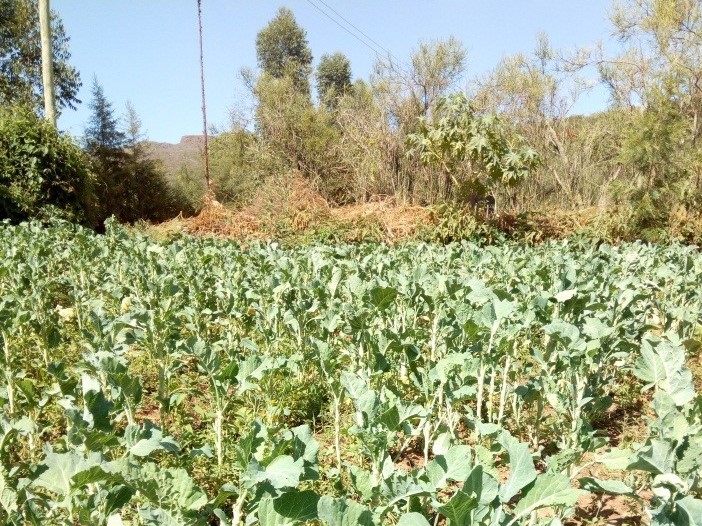 Suckers’ raised Sukuma Wiki (kales) |
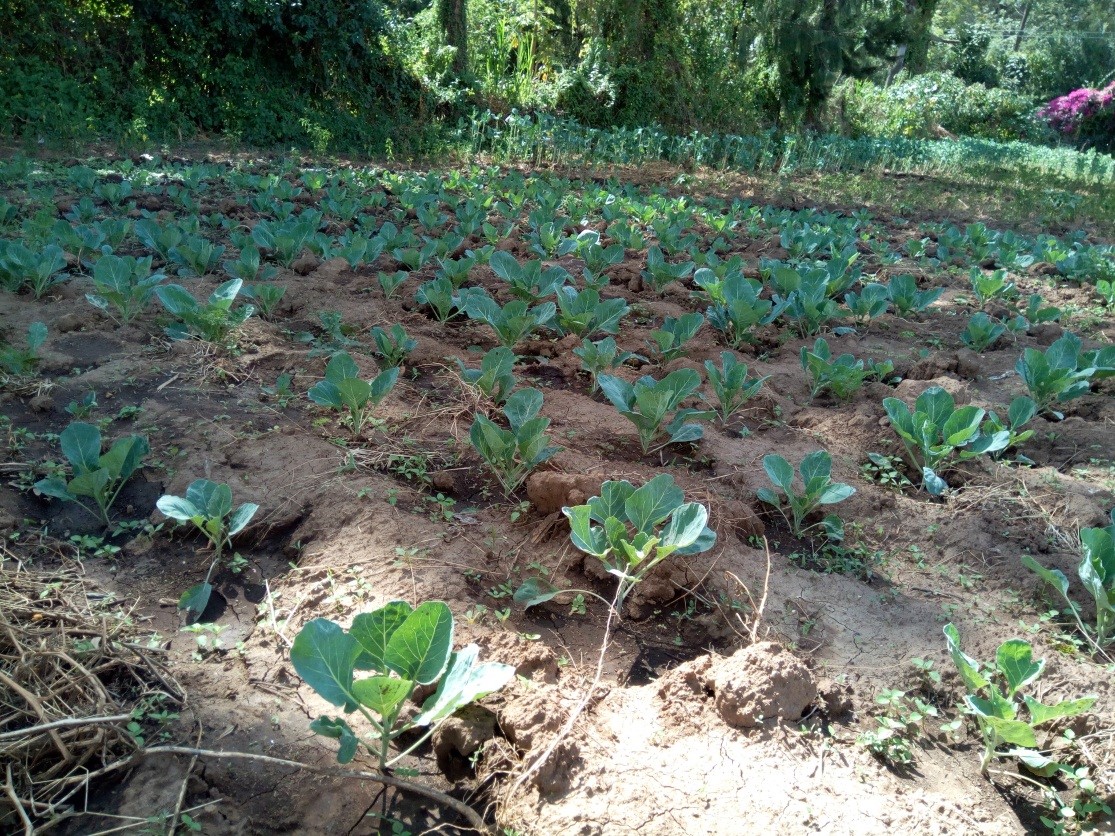 Newly established cabbages |
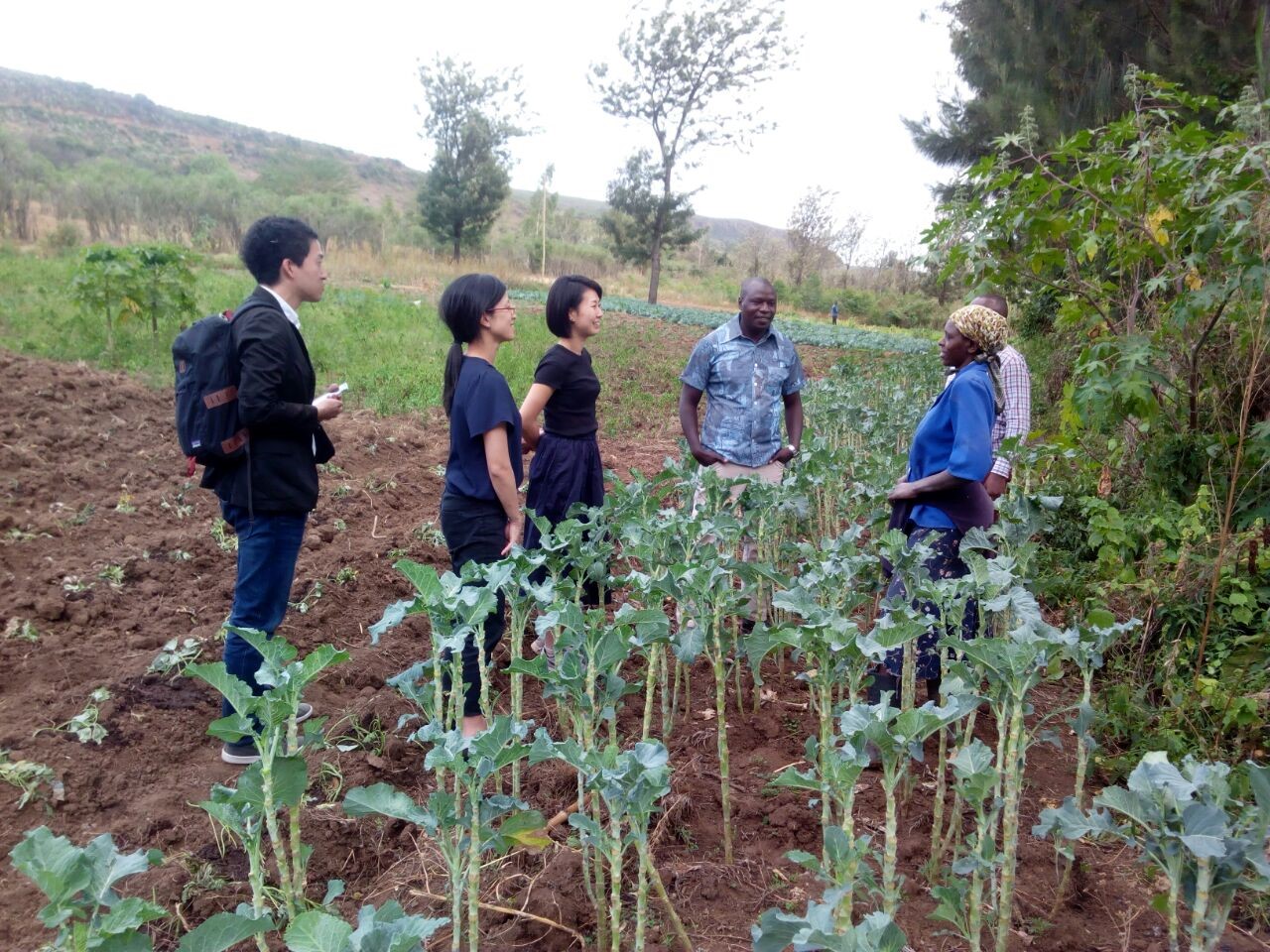
Mary Hosting Visitors at her 2000 m² field
Peter’s 2000 m2 field
The land is located at Kariandusi near an archeological site, Gilgil where Peter Njogu and his family lives. He has a wife and two children. The land has his homestead and a zero grazing unit for his two cows and three goats. He uses animals’ droppings for adding organic matter to the soil. The land is divided into sections; legume, fruits, vegetables, fodder and food crop. He also obtains livestock feed from his farm’s crop residues.
Farming is his only source of income after he lost his job as a driver. With assistance from his wife and other casual workers during peak periods he is able to produce and improve his economic livelihood.

Peter at his 2000 m² field
James’ 2000m2 field
The land is near Lake Elementaita at lake view point village, Gilgil. James Waweru and his family depend on agriculture for their well-being.His land has crop diversity; agro-forestry trees, fruits, vegetables (tomatoes, kales, onions, amaranths), Napier grass (fodder) and food/root crops. He has built his homestead, cow shed, pigsty, chicken hatchery and water reservoir on this land.
Varieties of fruit make his field unique in addition to his crop diversity. He has planted Passion, tree tomato, pepino melon, guava, oranges and pawpaw. He is happy that children in his family and neighborhood enjoy fresh and organically grown fruits during school holiday. In addition he has sugar cane close to his nappier grass. He sells surplous fruits, sugar cane, vegetables, animal products and sugar cane to the local market for a source of income.
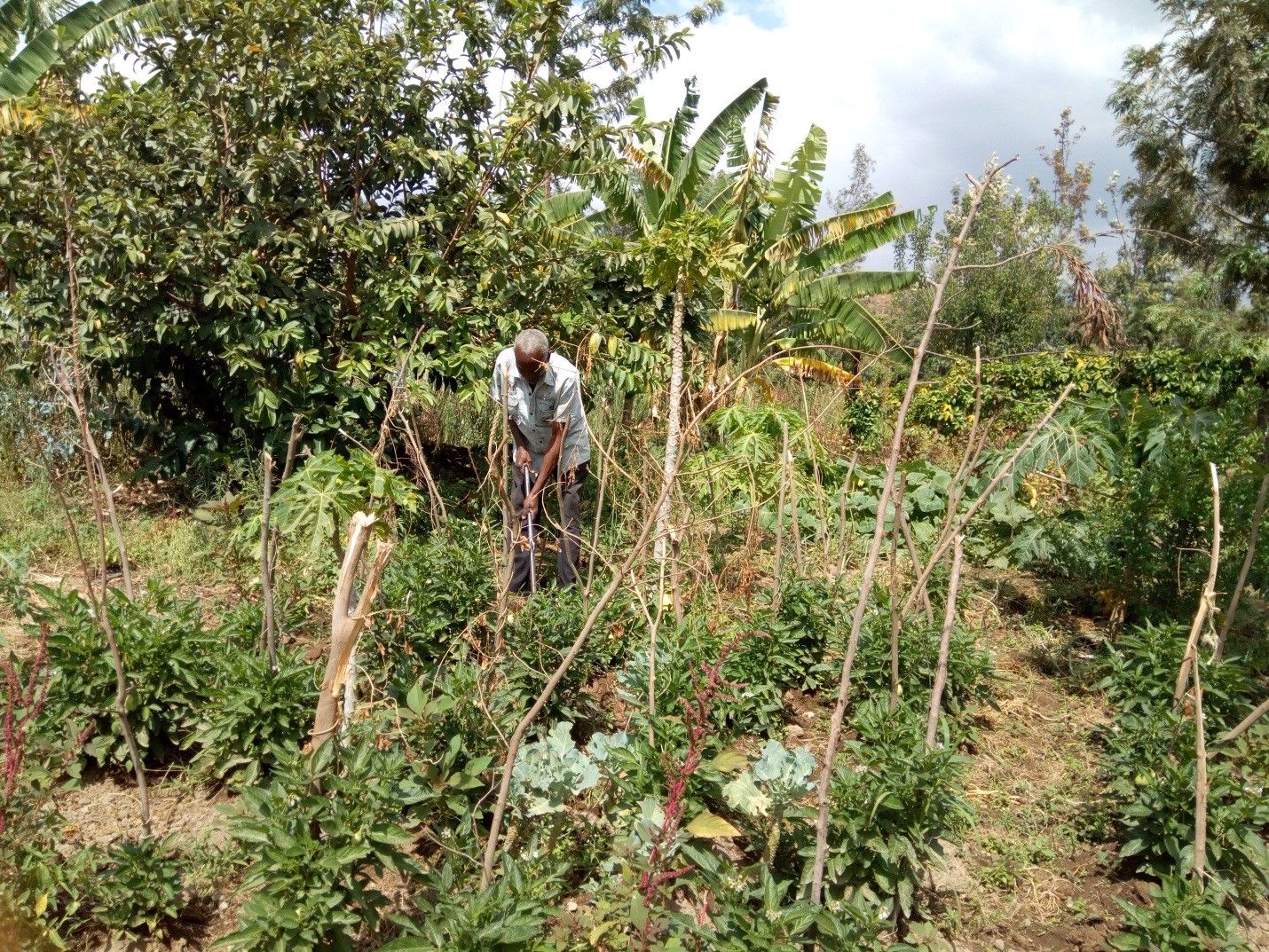
James weeding his 2000 m² field
Curtis’ 2000m2 Field
The land is located at Mbaruk along Nakuru-Nairobi highway proximal to Laikipia University, Nakuru campus. He manages the land with support from his family. He has five kids who entirely rely on the farm for meeting their needs. The field will serve as a Bio-intensive agriculture demonstration training demonstration to other farmers. He plants different types of vegetables, fruits, and food crops.
He has organized his field into raised beds and incorporates a lot of organic matter. The production output of these beds is high and they are able to conserve water. His neighbours and market seller obtain their vegetables from this field. He also raises vegetable seedlings to farmers who buy them from the field.
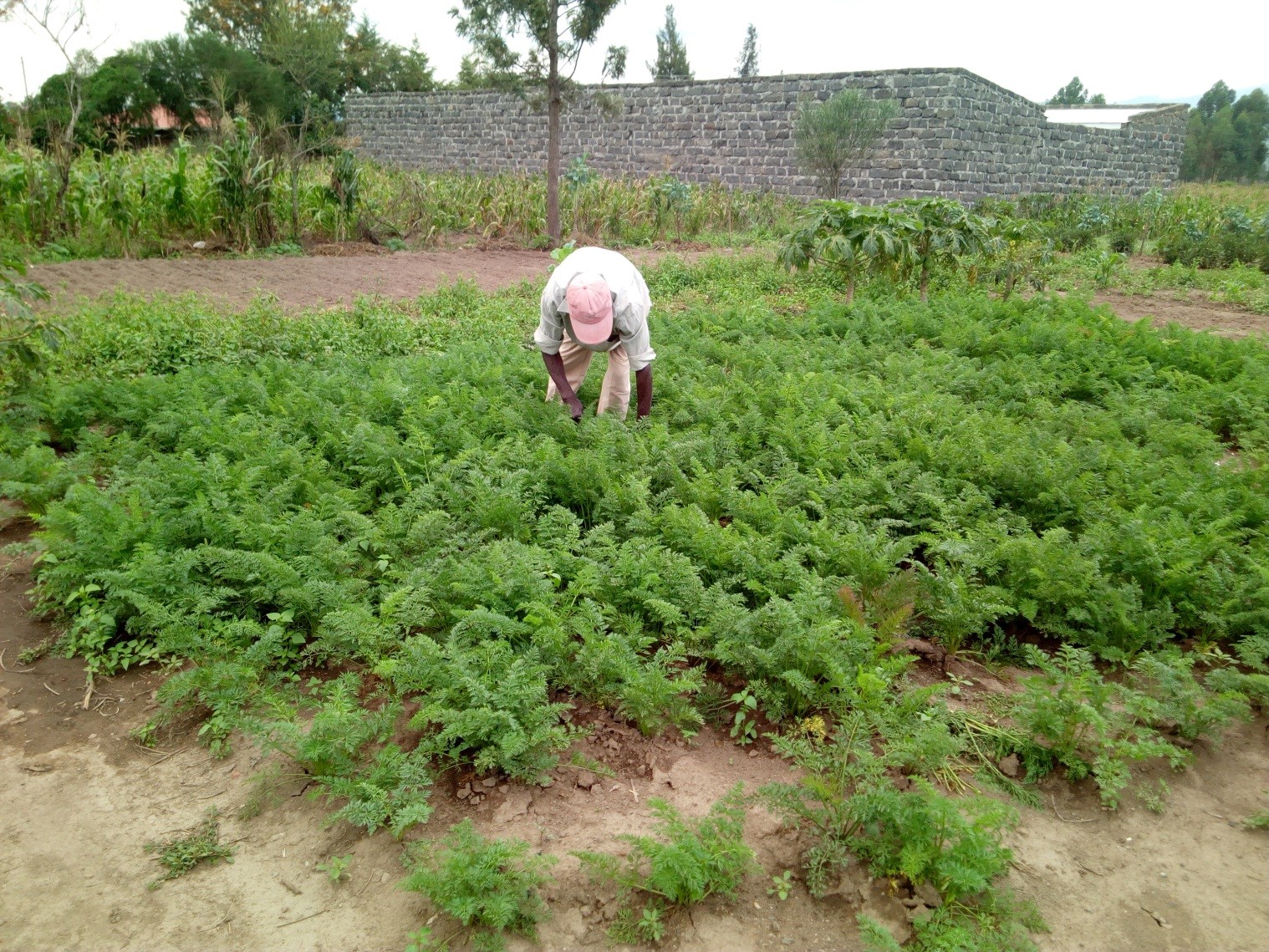
Curtis at his farm

